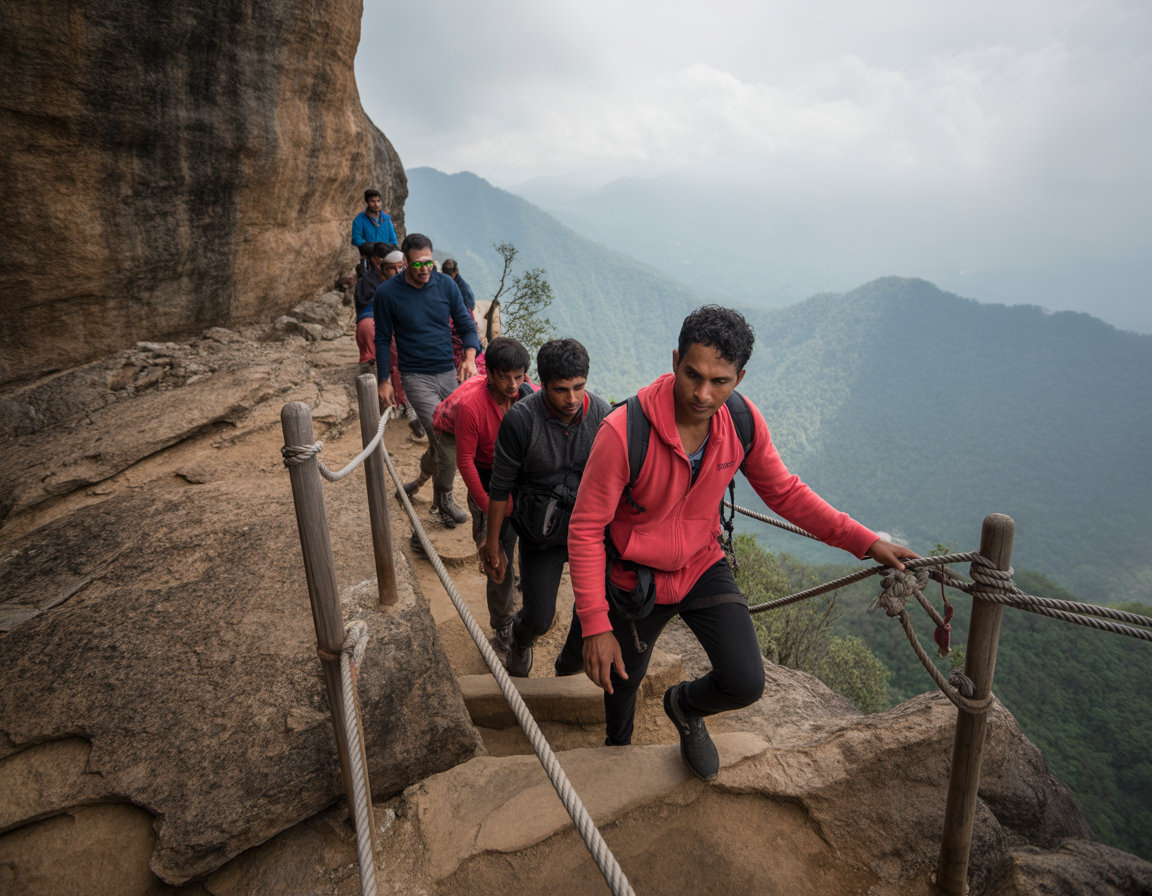India’s Adventure Tourism Faces Critical Safety Issues
India’s adventure tourism sector is experiencing remarkable growth, yet it grapples with a mounting safety crisis. Activities such as paragliding, rafting, and ziplining, while thrilling for tourists, have unfortunately become linked to several fatal accidents across various adventure hotspots.
Several tragic incidents, including the death of a paraglider and instructor in Goa in January when their harness snapped midair, underline the risks. Paragliding alone has resulted in around 30 fatalities in Himachal Pradesh over the past five years, with Bir-Billing being a notorious area due to unlicensed pilots and defective equipment. Additionally, drowning and falls related to rafting and ziplining have claimed more lives, pointing to a concerning absence of regulated safety norms.
The Expanding Market vs. Safety Oversights
The adventure tourism industry in India is estimated to be worth USD 16.7 billion in 2024, with projections indicating rapid growth to USD 86 billion by 2033. This boom is propelled by increased demand post-pandemic and rising local and international interest.
However, regulatory gaps are evident. India lacks mandatory licenses for adventure operators, and proper training for guides and instructors is often missing. Many companies start their operations without meeting even basic safety standards, a dangerous gamble for thrill-seekers.
Common Safety Shortcomings
- Unlicensed operators running rafting and ziplining activities without government approvals
- Poor understanding and enforcement of licensing prerequisites among tourism officials
- Absence of a technical body to certify instructors and quality of equipment
- Use of uncertified gear and inadequate pre-activity safety briefings
- Undertrained or uncertified guides risking human error during critical moments
Historical Context of Adventure Tourism in India
Adventure tourism in India is rooted in regions like the Himalayas, known for trekking, paragliding, and river sports, which have attracted thrill-seekers for decades. Despite the natural advantages and iconic spots such as Manali, Kullu, and Rishikesh, safety frameworks have lagged behind growth. Traditionally, adventure activities were informal and locally run, but with commercialization came an influx of operators, many lacking formal certification or adherence to safety protocols.
Global Comparisons in Safety Regulations
International destinations renowned for adventure tourism often implement stringent oversight. For instance:
| Country | Key Safety Regulations |
|---|---|
| New Zealand | Mandatory logging and repeated testing of all equipment under Adventure Activities Regulations |
| Switzerland | Federal licensing and insurance requirements for commercial paragliding pilots |
| France (Chamonix) | Guides must undergo years of training at ENSA before leading mountain activities |
| Canada (Whistler) | Annual audits of operators with strict gear inspections and penalties |
| UAE (Dubai) | Driver licensing and vehicle safety checks for desert safari operators |
India’s lack of comparable standards highlights the urgent need for regulatory reform to ensure tourist safety and promote sustainable growth in adventure tourism.
The Future of Adventure Tourism and Its Impact on Tourism Industry
As India’s adventure tourism market surges, the existing safety gaps pose a threat to its reputation and sustainability. Without enforced standards and proper regulatory frameworks, incidents will likely persist, deterring potential tourists and risking lives.
Enforcement of licensing, instructor certification, gear standardization, and regular inspections could help align India with global best practices, boosting confidence among tourists and operators alike.
Safety Recommendations for Tourists
- Verify operator licenses and official recognition by tourism authorities
- Request proof of instructor certifications from reputable bodies like NIM or IISM
- Inspect equipment for safety certifications such as UIAA, CE, or BIS
- Insist on safety briefings before every activity
- Avoid suspiciously low-cost deals and operators offering multiple diverse adventure activities without specialization
Economic and Tourism Implications
The growth of adventure tourism has significant implications for India’s broader tourism industry, affecting destination branding, tourist inflows, and employment opportunities. Addressing safety concerns will be crucial to maintain momentum, protect lives, and foster a positive image internationally.
Conclusione
India’s adventure tourism sector is a dynamic and rapidly growing market full of potential, featuring breathtaking destinations ideal for rafting, paragliding, trekking, and more. Yet, the existing safety deficits present serious challenges that could stall development and put travelers at risk.
For those exploring India’s exhilarating adventure activities, safety must be a top priority. Ensuring certified guides, licensed operators, and quality gear is essential before embarking on any excursion.
For adventure lovers seeking destinations where boating, sailing, and other water-based activities complement the thrills of the land, the Indian adventure hubs could benefit from adopting rigorous safety standards akin to global benchmarks.
For the pleasure of yachting, chartering boats, enjoying lakes and seas, and making the most of the Gulf’s sunshine and marinas, reliable services are key. To explore diverse marine destinations or rent sailing yachts that meet high safety and quality standards, GetBoat.com offers an international marketplace tailored to every taste and budget, supporting safe and memorable adventures on water as well.
Ultimately, the future of India’s adventure tourism depends on not just the thrill seekers, but on improving safety for every visitor, from valleys to vast waterways.

 Safety Concerns Rising as India’s Adventure Tourism Expands Rapidly">
Safety Concerns Rising as India’s Adventure Tourism Expands Rapidly">
